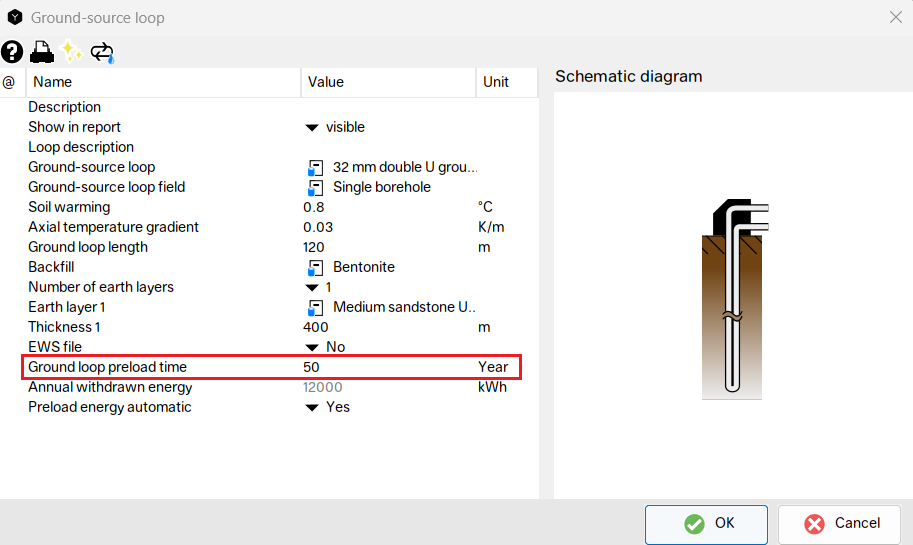How do I design ground-source heat loops as part of an integrated energy system in Polysun?
In this article, you will learn how to appropriately dimension ground-source heat loops in Polysun.
First, you start with a design selected on the basis of experience. You then optimize this by iteratively adapting, simulating and evaluating it in Polysun.
Initial dimensioning of the ground-source loop
You can proceed as follows for the initial design of the borehole heat exchanger:
First, use the size of the heat pump as a reference, which is usually designed according to the peak heat demand, and estimate the required output of the ground-source heat loop using the COP of the heat pump.
You then select the length of the geothermal probe using the required output as a rule of thumb, e.g. 30 W/m.
After the simulation, you will receive the simulated annual energy withdrawal of the ground-source loop under “Results” in the “Component results”. Enter this for further simulations in the component ground-source loop.
After configuring the probe field, set the ground loop preload time to 50 years, see illustration.

Optimizing the ground source heat loops in the system through multiple simulations
Run a new simulation and use the evaluation options to check relevant values, such as the ground temperature.
To do this, go to Component results and check whether the temperature in the ground (ProbeEwsTemperature) complies with the corresponding limits. In the component results, continue to analyze the maximum values of the “Inflow temperature during operation” and “Outflow temperature during operation” parameters to check that these limits are also complied with.
Then adjust the configuration of the system and the geothermal probe in a copy of the variant according to your assessment and carry out another simulation with subsequent evaluation.
A comparison of variants will lead you to the energetic and economic optimum of the geothermal probe as part of the integrated energy system.